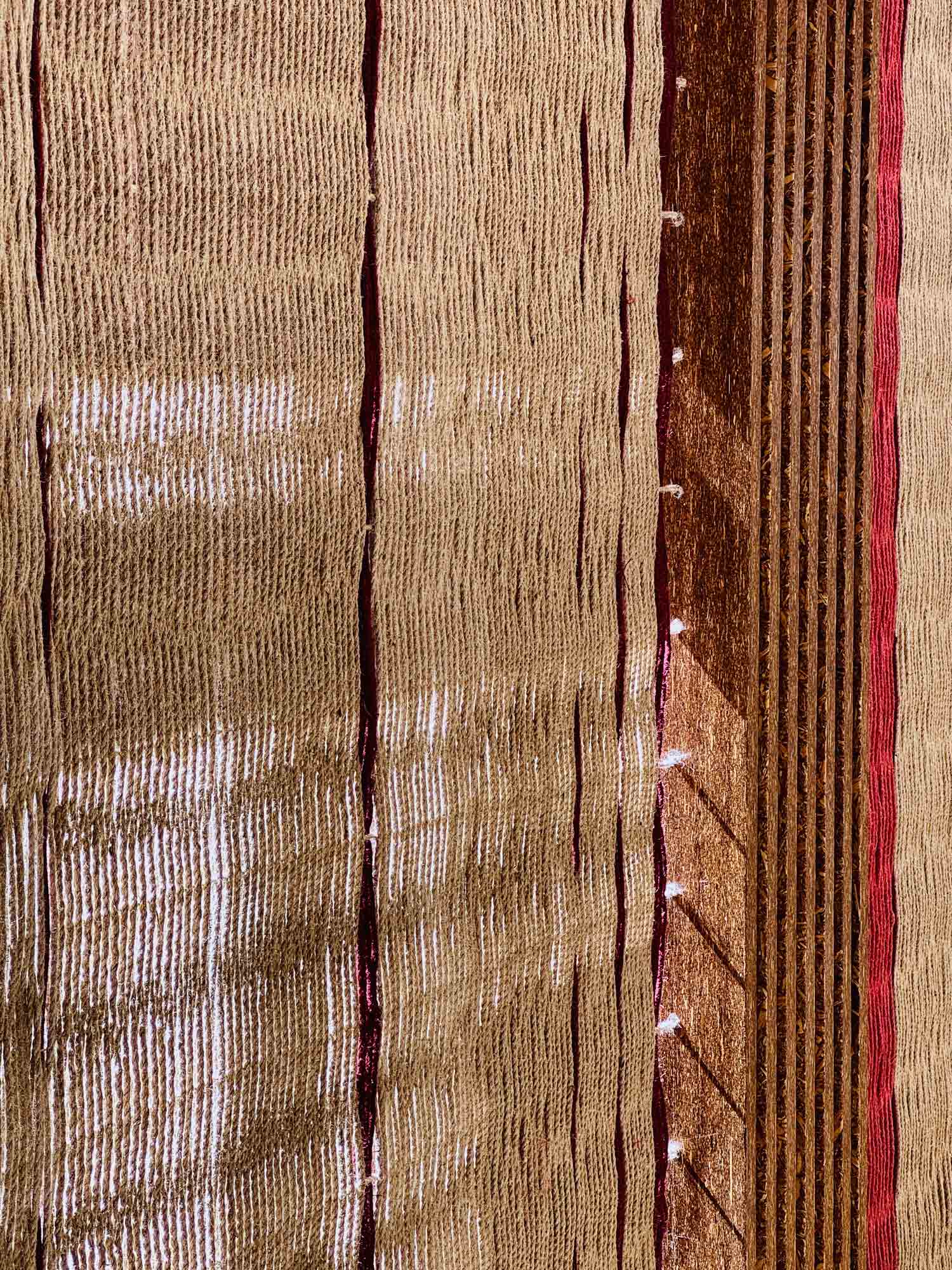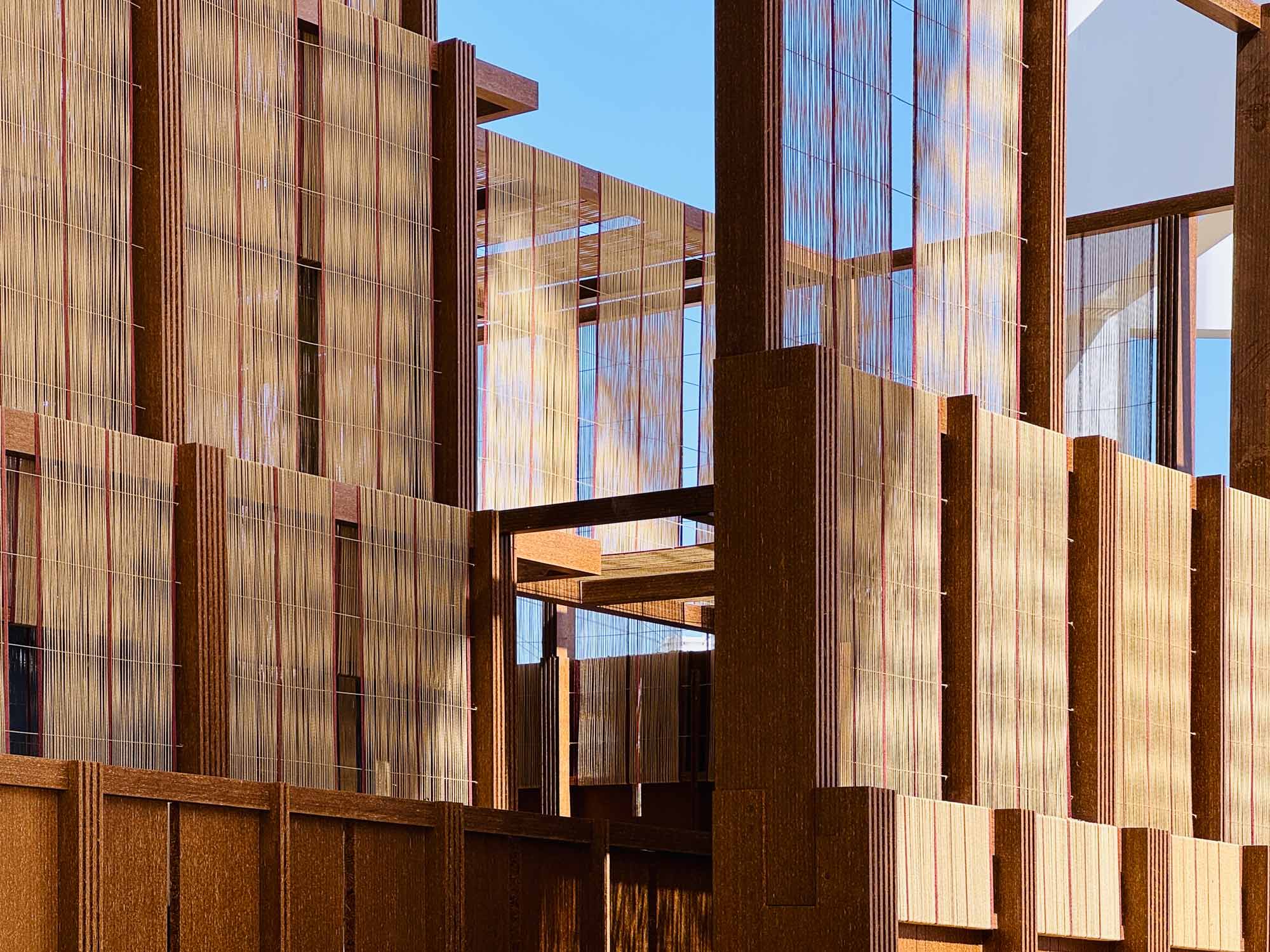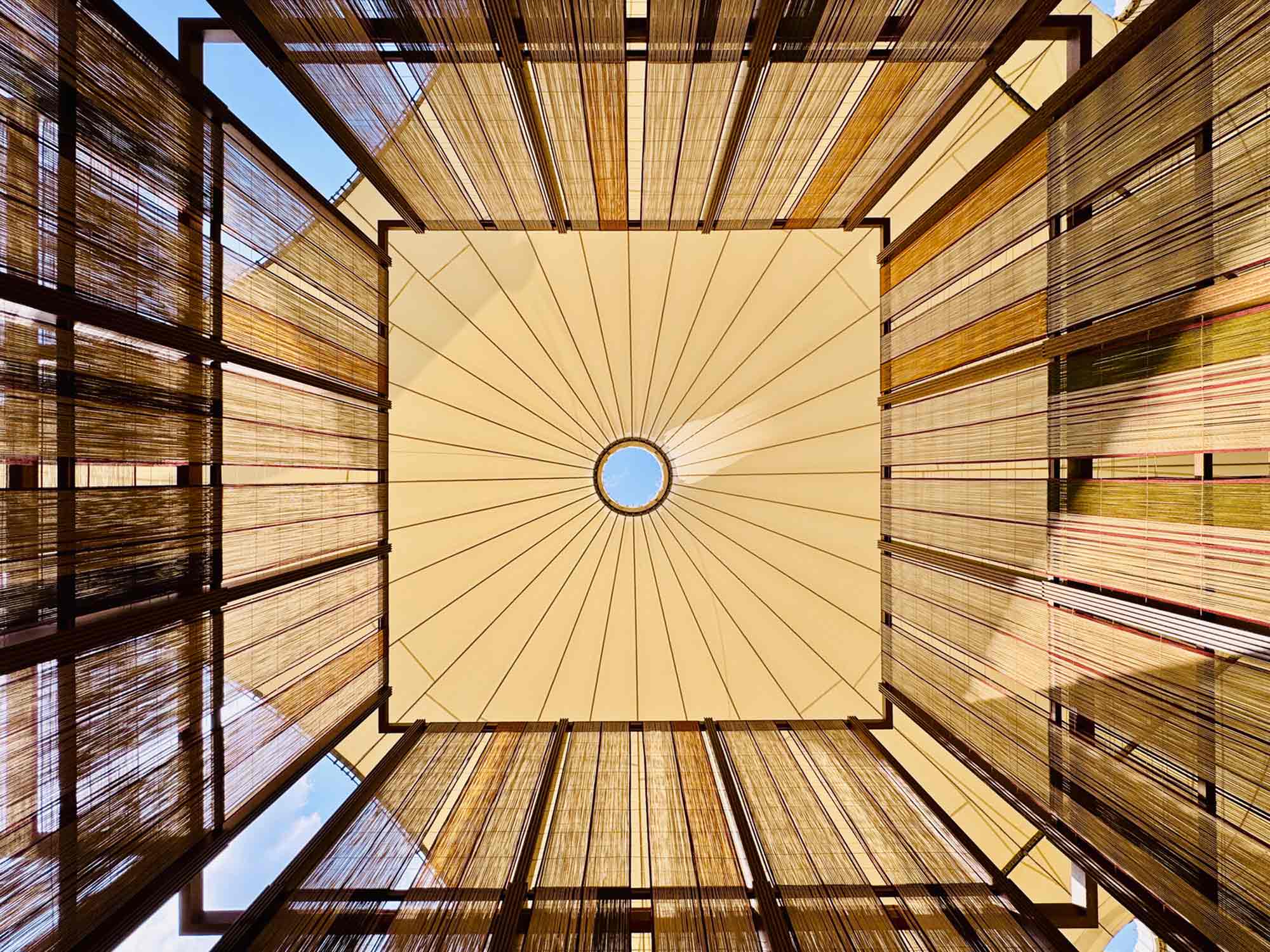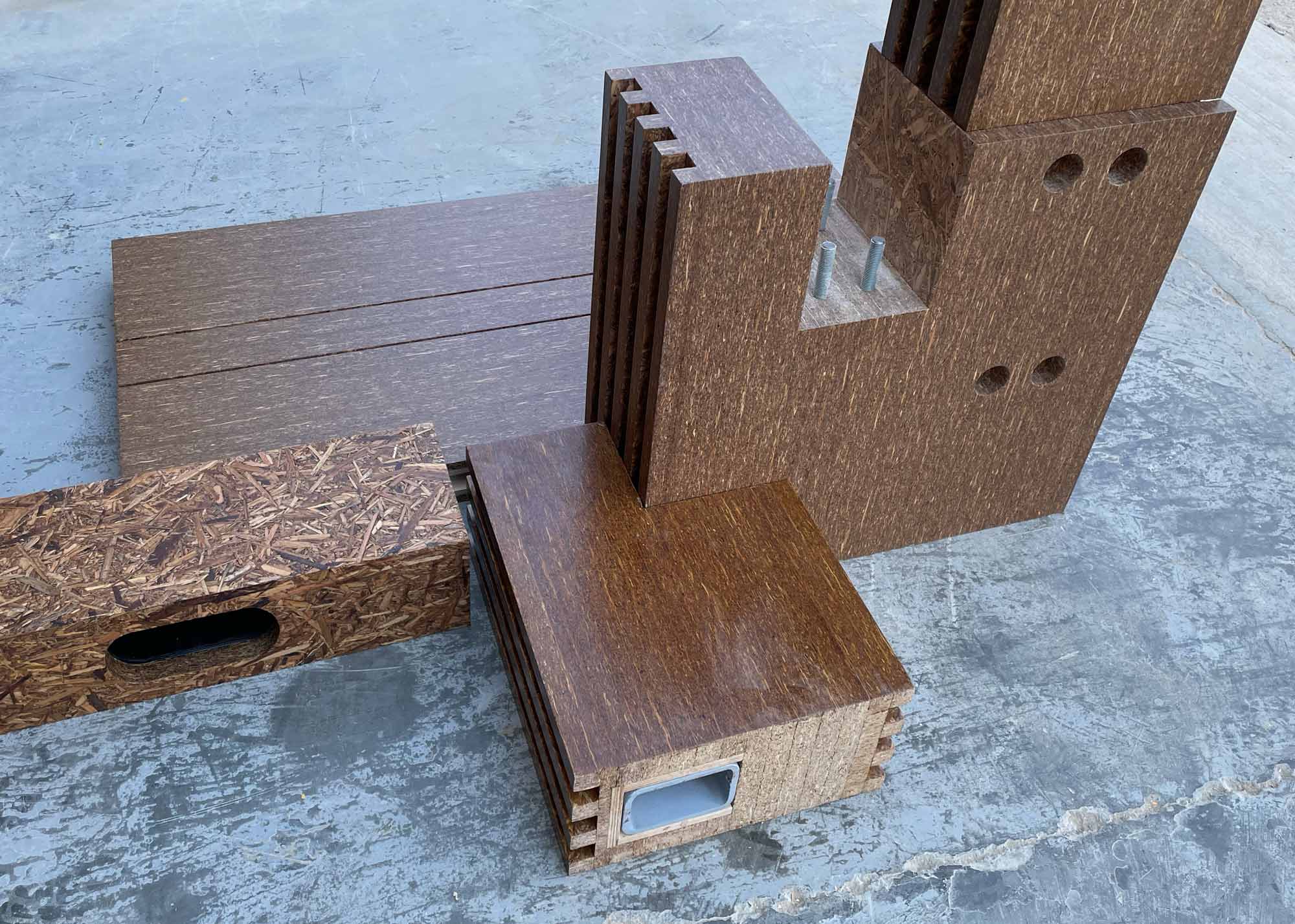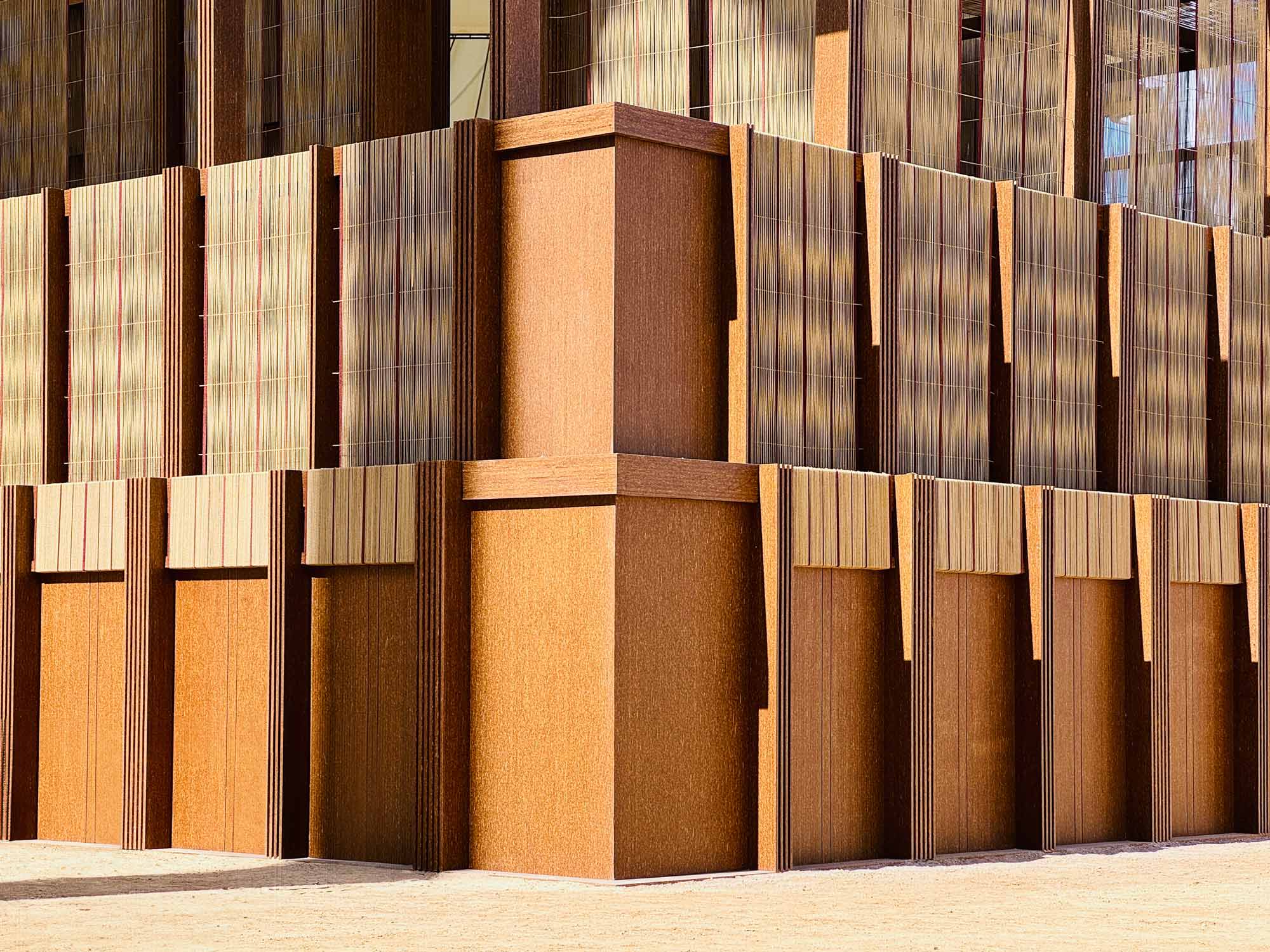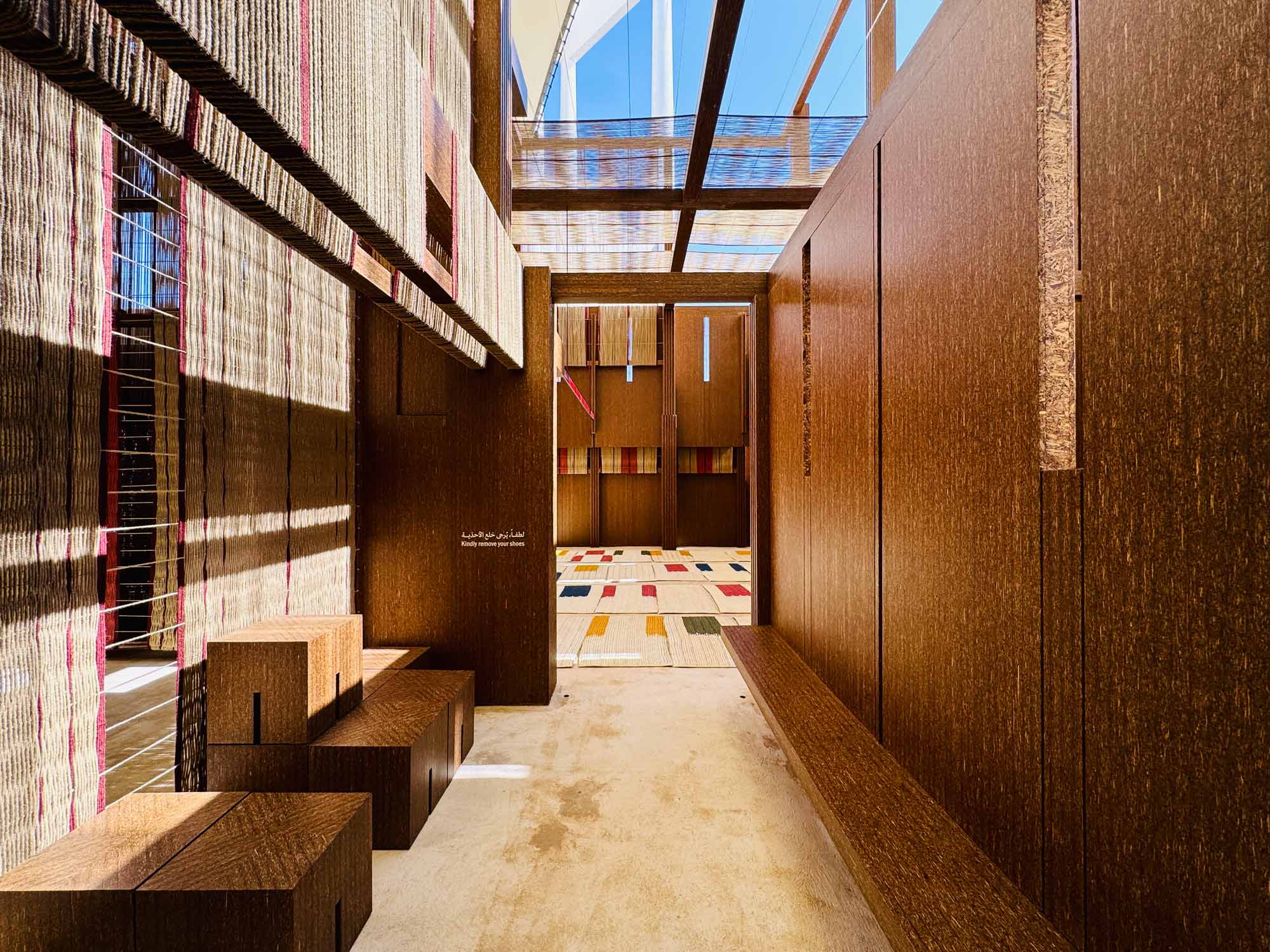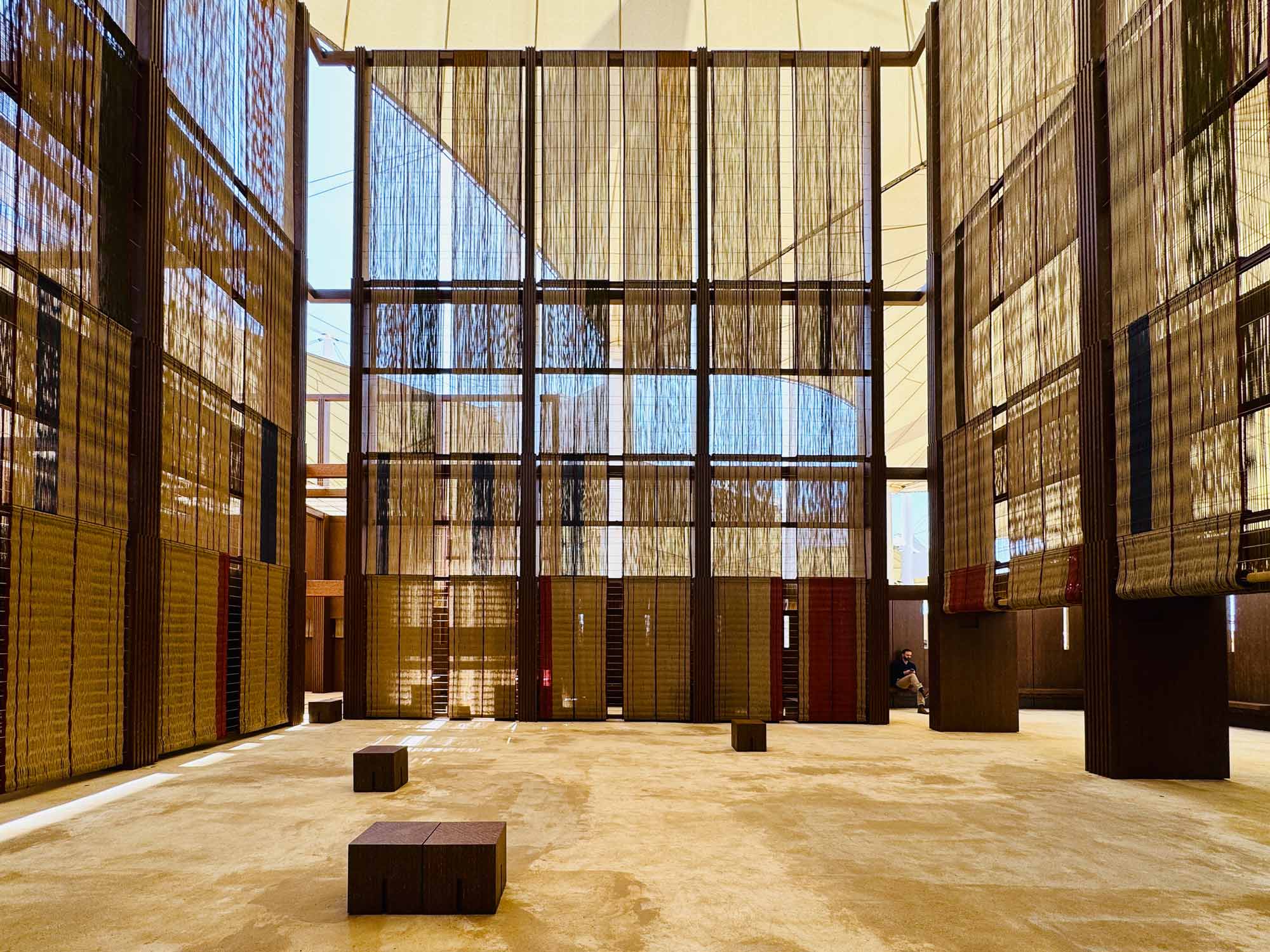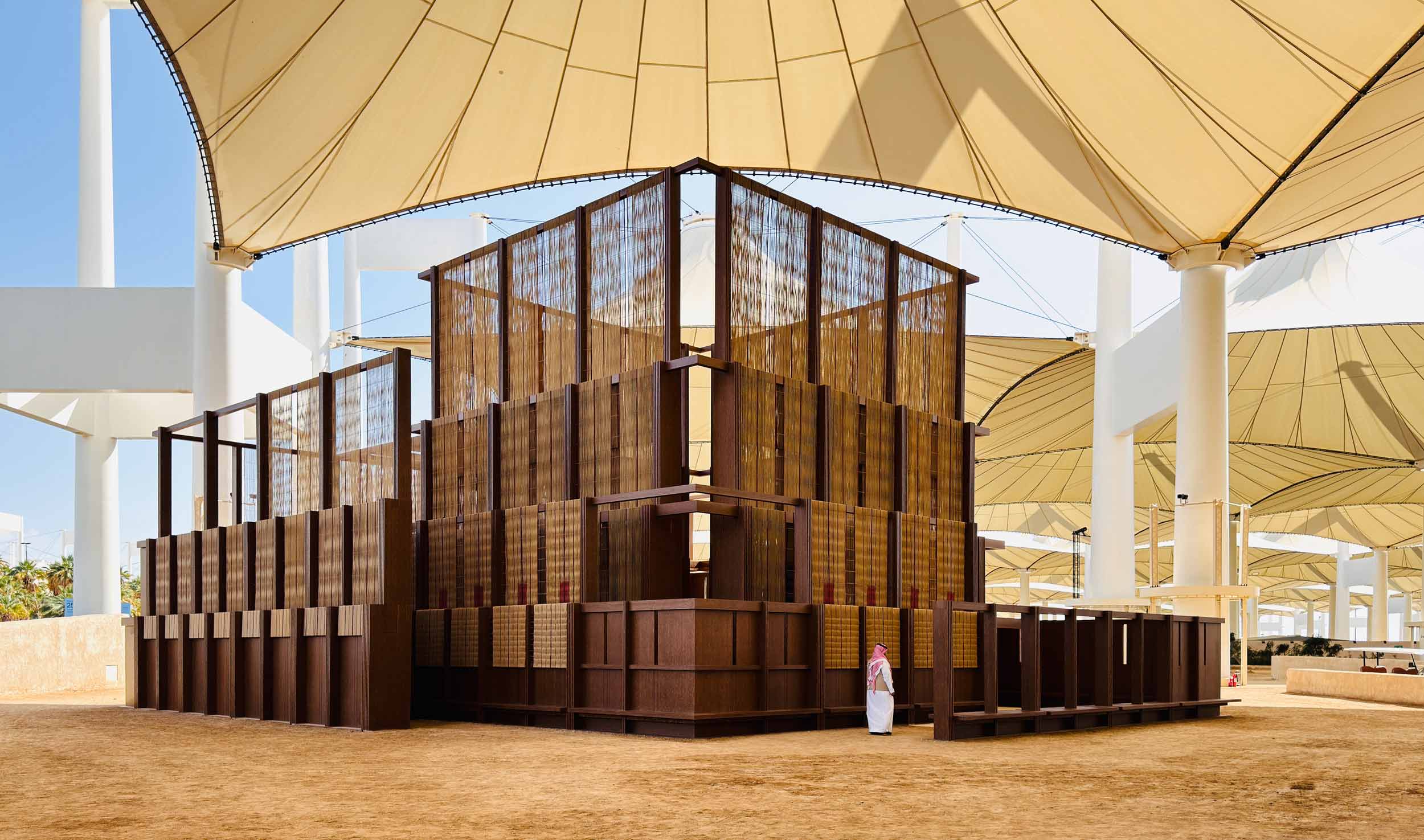
The inaugural winner of the AlMusalla Prize, a new architectural competition, ‘On Weaving’ is an experimental and innovative project for the 2025 Islamic Arts Biennale in Jeddah, that intertwines heritage, sustainability and modern engineering to create a spiritual and communal space.
A message to the world about what one can do with ‘waste’.
Inspired by the traditional courtyard typology, it is a contemporary reinterpretation that celebrates the historical use of date palm trees in Saudi Arabia’s built environment. The project emphasises sustainability by utilising 90 m3 of palm tree waste as the primary construction material, incorporating traditional weaving techniques for both structural and aesthetic components.
The design is centred around a modular system that ensures both adaptability and sustainability. The building comprises date palm timber for the superstructure, woven palm fibre for the screens, and a mud floor to complement the sustainability narrative. Palm frond waste is taken and pressed into boards and is then furthermore glulaminated to create the structural sections needed to resist the forces applied to the building. This undiscovered structural solution required laboratory testing, yielding impressive results.
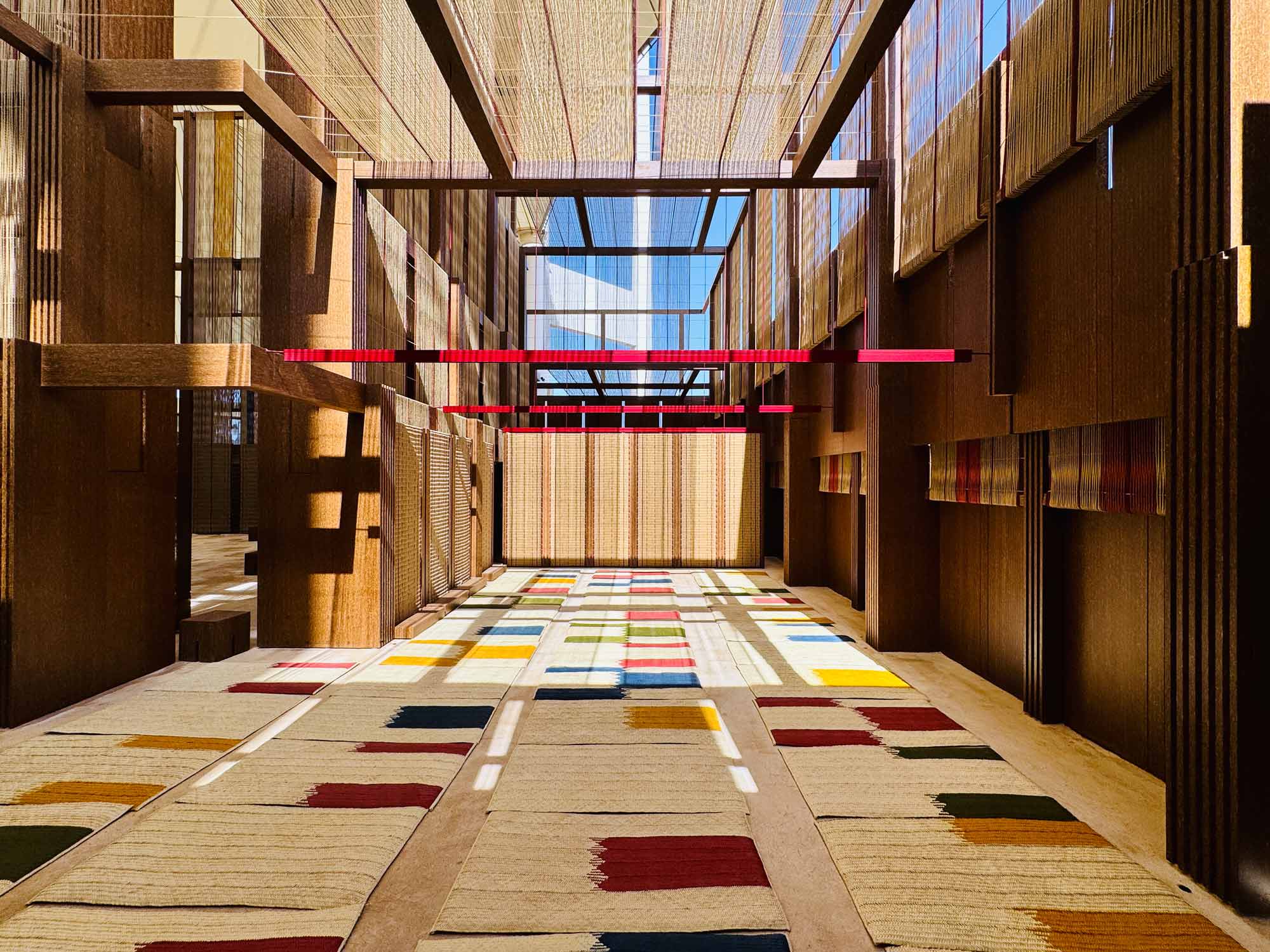
The façade screening is formed from 200 linear kilometres of hand-woven palm fibre rope that ensures passive ventilation while maximising shading for comfort in the hot Jeddah climate. The furniture within the space and prayer mats consists of the same frond timber and artisan hand-woven palm frond, respectively.
Considering the building is almost entirely made of rescued waste materials, the future of the pavilion needed to be secured to avoid only the same outcome. As such, a crucial aspect of the engineering approach is the requirement for design for disassembly, which allows the structure to be easily taken apart, transported, and reassembled in different locations. This ensures longevity and reuse, reducing construction waste and environmental impact.
By integrating vernacular materials with modern engineering, the musalla serves as both an architectural statement and an ecological intervention, demonstrating how traditional techniques can be revitalised to create carbon-negative, contextually responsive architecture.
